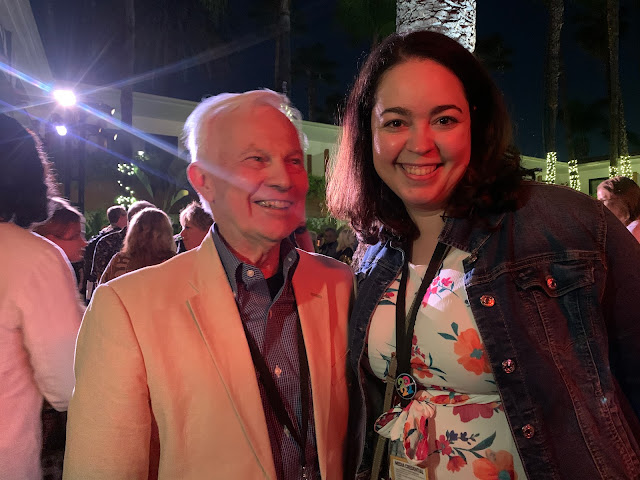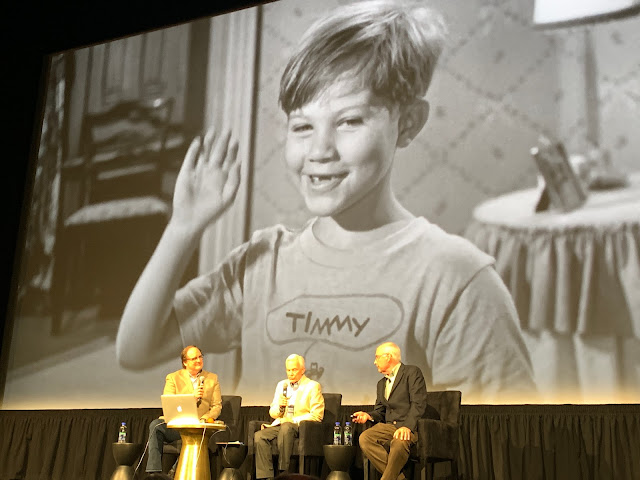It's that time again! I've poured over countless publisher catalogs to find some classic film book gems so you don't have to. Here is another robust list of new and upcoming releases with something for every classic movie enthusiast.
Are you new to my list? Here are the details. The books include biographies, memoirs, scholarly texts, coffee table books and more from a variety of publishers. For any scholarly books I make sure the ones included are affordable. There are also some reissues added to the bunch. Publication dates range from July to December 2022 and these are subject to change.
Links go to Amazon, Barnes and Noble and Powell's. I receive a small commission if you shop through some (not all) of my buy links.
JULY
Agent Josephine
American Beauty, French Hero, British Spy
by Damien Lewis
PublicAffairs
496 pages — July 2022
All for Beauty
Makeup and Hairdressing in Hollywood's Studio Era
by Adrienne L. McLean
Rutgers University Press
326 pages — July 2022
Gone With the Wind
1939 Day by Day
by Pauline Bartel
Lyons Press
250 pages — July 2022
Inventing the It Girl
How Elinor Glyn Created the Modern Romance and Conquered Early Hollywood
by Hilary A. Hallett
Liveright
Making Hollywood Happen
Seventy Years of Film Finances
by Charles Drazin
University of Wisconsin Press
Marlene
by Marlene Dietrich
University Press of Kentucky
Marlene Dietrich
Photographs and Memories
by Marlene Dietrich
University Press of Kentucky
304 pages — July 2022
Marlene Dietrich's ABC's
Wit, Wisdom, and Recipes
by Marlene Dietrich
University Press of Kentucky
Norman Mailer. Bert Stern. Marilyn Monroe
by Norman Mailer and Bert Stern
TASCHEN
276 pages — July 2022
The Queen of Technicolor
Maria Montez in Hollywood
by Tom Zimmerman
University Press of Kentucky
472 pages — July 2022
Road Trip to Nowhere
Hollywood Encounters the Counterculture
by Jon Lewis
University of California Press
352 pages — July 2022
Rock on Film
The Movies That Rocked the Big Screen
by Fred Goodman
Foreword by Michael Lindsay-Hogg
TCM and Running Press
Speaking of Harpo
by Susan Fleming Marx and Robert S. Bader
Applause
356 pages — July 2022
AUGUST
Creating Carmen Miranda
Race, Camp, and Transnational Stardom
by Kathryn Bishop-Sanchez
Vanderbilt University Press
304 pages — August 2022
Deanna Durbin, Judy Garland, and the Golden Age of Hollywood
by Melanie Gall
Lyons Press
288 pages — August 2022
Getting Carter
Ted Lewis and the Birth of British Noir
by Nick Triplow
Soho Syndicate
August 2022
The Hollywood Motion Picture Blacklist
Seventy-Five Years Later
by Larry Ceplair
University Press of Kentucky
246 pages — August 2022
Hollywood Tiki
Film in the Era of the Pineapple Cocktail
by Adam Foshko and Jason Henderson
The History Press
176 pages — August 2022
The Maltese Falcon
Special Edition
by Dashiell Hammett
Vintage Crime
240 pages — August 2022
The MGM Effect
How a Hollywood Studio Changed the World
by Steven Bingen
Lyons Press
The Postman Always Rings Twice
Special Edition
by James M. Cain
Vintage Crime
128 pages — August 2022
Roots of Film Noir
Precursors from the Silent Era to the 1940s
by Kevin Grant
McFarland
248 pages — August 2022
Ruth Roman
A Career Portrait
by Derek Sculthorpe
SEPTEMBER
Bob Willoughby
A Cinematic Life
by Bob Willoughby
Chronicle Chroma
368 pages — September 2022
Captain of Her Soul
The Life of Marion Davies
by Lara Gabrielle
University of California Press
344 pages — September 2022
*Second Edition*
Carole Lombard
Twentieth-Century Star
by Michelle Morgan
The History Press
272 pages — September 2022
Ernest Lehman
The Sweet Smell of Success
by Jon Krampner
University Press of Kentucky
392 pages — September 2022
Expressionism in Art and Film
by Lisa Felicitas Mattheis, Kristina Jaspers and Marek Zidowicz
Silvana Editoriale
240 pages — September 2022
Godzilla
The Ultimate Illustrated Guide
Toho Co. Ltd, Graham Skipper
256 pages — September 2022
**Expanded Edition**
Harlow in Hollywood:
The Blonde Bombshell in the Glamour Capital, 1928-1937
by Darrell Rooney, Mark A. Vieira
Angel City Press
208 pages — September 2022
A Little Book About Movies
Quotes for the Cinephile in Your Life
Orange Hippo!
192 pages — September 2022
Running the Race
The "Public Face" of Charlton Heston
by Brian Steel Wills
Savas Beatie
456 pages — September 2022
Sunset Boulevard
by Steven Cohan
BFI
104 pages — September 2022
Viva Hollywood
The Legacy of Latin and Hispanic Artists in American Film
by Luis I Reyes
Foreword by Jimmy Smits
TCM and Running Press
288 pages — September 2022
Working 9 to 5
A Women's Movement, A Labor Union, and the Iconic Movie
by Ellen Cassedy
Foreword by Jane Fonda
IPG
272 pages — September 2022
OCTOBER
A-Z Great Film Directors
by Andy Tuohy
Cassell
224 pages — October 2022
The Academy and the Award
The Coming of Age of Oscar and the Academy of Motion Picture Arts and Sciences
by Bruce Davis
Brandeis University Press
The Art of Film
Working on James Bond, Aliens, Batman and More
by Terry Ackland-Snow and Wendy Laybourn
The History Press
356 pages — October 2022
Audrey Hepburn
The Illustrated World of a Fashion Icon
by Megan Hess
Hardie Grant Books
192 pages —October 2022
Cinema Speculation
by Quentin Tarantino
Harper
400 pages — October 2022
The Classic Movies Coloring Book
IglooBooks
48 pages — October 2022
Don Rickles
Merchant of Venom
by Michael Seth Starr
Citadel
320 pages — October 2022
The Extraordinary Life of an Ordinary Man
A Memoir
by Paul Newman
edited by David Rosenthal
Foreword by Melissa Newman
Afterword by Clean Newman Soderlund
Knopf
320 pages — October 2022
The Farrows of Hollywood
Their Dark Side of Paradise
by Marilyn Ann Moss
Skyhorse Publishing
312 pages — October 2022
Film Noir Portraits
edited by Tony Nourmand and written by Paul Duncan
Reel Art Press
From Russia With Love
by Llewella Chapman
BFI
112 pages — October 2022
A Front Row Seat
An Intimate Look at Broadway, Hollywood, and the Age of Glamour
by Nancy Olson Livingston
University Press of Kentucky
432 pages — October 2022
The Godfather, Part II
by Jon Lewis
BFI
96 pages — October 2022
It's a Wonderful Life Advent Devotional
by Anne Morse
Crosslink Publishing
123 pages — October 2022
Picnic at Hanging Rock
by Anna Backman Rogers
BFI
Picturing Indians
Native Americans in Film, 1941-1960
by Liza Black
University of Nebraska Press
Shari Lewis and Lamb Chop
The Team That Changed Children's Television
by Mallory Lewis, Nat Segaloff
University Press of Kentucky
240 pages — October 2022
Straight Lady
The Life and Times of Margaret Dumont, "The Fifth Marx Brother"
Chris Enss, Howard Kazanjian
Lyons Press
TCM Underground
50 Must-See Films from the World of Classic Cult and Late-Night Cinema
by Millie De Chirico and Quatoyiah Murry
Foreword by Patton Oswalt
TCM and Running Press
240 pages — October 2022
Vampire Cinema
The First 100 Years
by Christopher Frayling
Reel Art Press
272 pages — October 2022
NOVEMBER
The 50 MGM Films That Transformed Hollywood
Triumphs, Blockbusters, and Fiascos
by Steven Bingen
Lyons Press
344 pages — November 2022
Aline MacMahon
Hollywood, the Blacklist, and the Birth of Method Acting
by John Stangeland
University Press of Kentucky
416 pages — November 2022
Hollywood
The Oral History
by Jeanine Basinger, Sam Wasson
Harper
800 pages — November 2022
Lawrence Tierney
Hollywood's Real-Life Tough Guy
by Burt Kearns
University Press of Kentucky
448 pages — November 2022
My Maril
Marilyn Monroe, Ronald Reagan, Hollywood, and Me
by Terry Karger with Jay Margolis
Foreword by Michael Reagan
Post Hill Press
224 pages — December 2022
Our Fair Lady
Audrey Hepburn's Life in Pictures
by Chiara Pasqualetti Johnson
Acc Art Books
224 pages — November 2022
There's a Body in the Window Seat!
The History of Arsenic and Old Lace
by Charles Dennis
Applause Books
168 pages — November 2022
Tokyo Story
by Alastair Phillips
BFI
96 pages — September 2022
Tyrone Power
Gender, Genre and Image in Classical Hollywood Cinema
by Gillian Kelly
Edinburgh University Press
248 pages — November 2022
DECEMBER
100 Movies of the 1980s
edited by Jürgen Müller
TASCHEN
824 pages — December 2022
101 Things You Should Know about James Bond 007
by Michael Dorflinger
Schiffer
192 pages — December 2022
Cinema's Original Sin
D.W. Griffith, American Racism, and the Rise of Film Culture
by Paul McEwan
University of Texas Press
272 pages — December 2022
Elizabeth Taylor
The Grit & Glamour of an Icon
by Kate Andersen Brower
Harper
512 pages — December 2022
Frank & Marilyn
The Lives, the Loves, and the Fascinating Relationship of Frank Sinatra and Marilyn Monroe
by Edward Z. Epstein
Post Hill Press
256 pages — December 2022
Rochelle Hudson
A Biography and Career Record
by David C. Tucker
McFarland
178 pages — December 2022
In Case You Missed It!
Frank Sinatra on the Big Screen
The Singer as Actor and Filmmaker
by James L. Neibaur and Gary Schneeberger
McFarland
French Film History
1895-1946
by Richard Neupert
University of Wisconsin Press
392 pages — June 2022
(check roundup #18 for more 2022 titles)
Do any of these titles pique your interest? Let me know in the comment section.
Here are my previous round-ups:
















































































.png)
.png)































